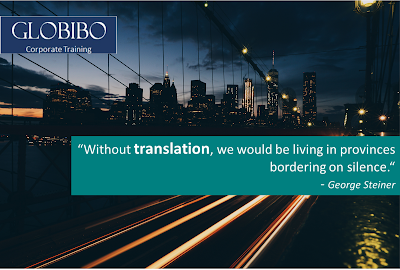Training is essential for every organization, and it has become a necessary part of employees’ professional development these days. However, it is vital to understand that different regions and cultures have diverse languages and learning styles, which can pose a challenge when it comes to training. This is where translating training content comes in and offers cross-cultural training.
Translating training content for global teams is a complex task that requires careful planning, attention to detail, and a deep understanding of your target audience. When done correctly, it can ensure that all employees, regardless of their location or language, receive the same level of training and understanding.
Here are a few tips provided by our expert team of Globibo regarding training content translation for international teams.
Understand Your Audience
It is crucial to comprehend the language, culture, and learning preferences of your target audience before translating training content. You should take into account their learning preferences, prior training experiences, and educational background. You can use the information in this article to produce engaging content for your international team that is simple to understand.
You should thoroughly research the language and culture of your audience if you want to comprehend them, which can help upgrade their knowledge of cross-cultural practices. By doing this, you’ll be better able to avoid any potential linguistic or cultural barriers that might arise during training.
Consider Cultural Difference
When creating training content for a global team, it’s important to keep in mind that different cultures may have different values, beliefs, and communication styles. These differences can affect the way that your training content is received and understood by your audience.
You should consider the cultural backgrounds of your international teams to make sure that your training materials are effective. To do this, the content may need to be modified to make it more relevant and appropriate for different cultural contexts.
Simplify Your Language and Use Visual Aids
The use of visual aids and plain language comes next on the list of suggestions. When translating content, use straightforward language to make it simpler for readers to understand. Avoid using complex or idiomatic expressions that might be difficult to translate or understand.
Additionally, you ought to incorporate visual aids into your training materials. Images, videos, and diagrams are all-encompassing visual aids that can be used to illustrate complex ideas and this will help your global team to understand the content more easily and retain it better.
Use Professional Translation Services
The third piece of advice is to use qualified translation services. Content translation is a difficult task that demands a high level of expertise. Using qualified translation services guarantees that your content is correctly translated and suitable for your target audience’s culture.
Your training material will be localized with the help of professional translation service providers, like us. Localization entails modifying your content to account for your target audience’s linguistic and cultural diversity. This involves utilizing language that is appropriate for your target audience, including idioms and cultural references.
Test Your Content
The last tip is to proofread your content before sending it to your international team. To ensure that it is simple to understand and that it satisfies their needs, you should test or assess your content with a representative sample of your target audience.
You can find out if there are any areas in your content that need more explanation or improvement by proofreading it. You will also have the chance to get input from your intended audience in order to further improve your training content.
Conclusion
Training materials for international teams must be translated in order to ensure that each employee receives an equal amount of instruction and understanding. If you are looking for professional translation services for your global training content, Globibo can help.
To ensure that your content is accurately translated and localized for your target audience, count on the knowledge and experience of our native-speaking translators. Get in touch with us right away to find out more about how we can support your global training objectives.


